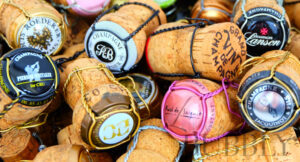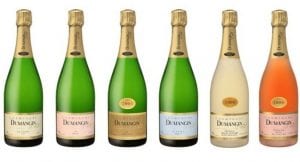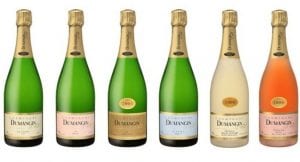Glass of Bubbly
Raventós i Blanc Conca del Riu Anoia
Why leave the Cava DO? In 1888, Manuel Raventós Doménech creates a sparkling wine from Penedés with the three native varieties: Xarel·lo, Macabeu and Parellada. When we created CAVA in 1872, we dreamed of a World Class sparkling wine. This is why Josep Raventós Fatjó innovated with Xarel.lo from the same vineyard where “de la Finca” comes…
Read MoreRaventos i Blanc – Manuel Raventós Mágnum 2003
Produced since 1991, this sparkling wine was created by Manuel Raventós, the founder of Raventós i Blanc. In 2001, Manuel Raventós and his son Pepe decided to grow this sparkling wine on two specific plots of the Raventós i Blanc estate: el Clos del Serral and Creueta del Coll. El Clos del Serral occupies a…
Read MoreRaventos i Blanc – L’Hereu 2011
L’ Hereu is our “premier”, the finest symbol of how we like to work. Complexity in varieties and soils, with Macabeu as the structural base. Estate: The soil on the estate is calcareous and dates from the oldest period of the Penedès valley, some 16 million years ago, when it was still covered by the Mediterranean. The…
Read MoreWhat is a Muselet?
A Muselet is the wire cage that fits over the cork of a bottle of Champagne or sparkling wine to prevent the cork from emerging under the pressure of the carbonated contents. Bottles were initially corked with pieces of wood with oil-sponged cloth, and then plunged in wax. They discovered very quickly that it was not sufficient to sustain…
Read MoreRaventos i Blanc – De La Finca 2009
The result of a new philosophy of making sparkling wines based on a study of the forces of interaction between the soil, the microclimate, the vines, the animals and the people working on our 21st century estate: bio-synergies. Lying 50 km to the west of Barcelona, De la Finca comes from a historic vineyard whose geology and…
Read MoreRaventos i Blanc – De Nit 2011
Innovating through the monastrell variety which brings complexity and elegance in colour, maintaining the usual freshness and concentration of our sparklings. Estate: The soil on the estate is calcareous and dates from the oldest period of the Penedès valley, some 16 million years ago, when it was still covered by the Mediterranean. The River Anoia has carved…
Read MoreRaventos i Blanc
1. – History: of a family inextricably linked to their land: a winemaking tradition going back over 500 years. The Raventós i Blanc estate, which has belonged to the Raventós family since 1497, covers 90 ha of vineyards, woodlands and a lake in Sant Sadurní d’Anoia. It represents possibly the most longstanding winemaking enterprise in the hands of…
Read MorePremier Cru Champagnes – Champagne Dumangin
Champagne producers for 5 generations, Champagne J. Dumangin Fils offers a comprehensive range of internationally award winning Premier Cru Champagnes. Champagne La Cuvee 17 – the latest from the Dumangin Family. Champagne Premier Cru – Le Rose – Finesse, colour, fruit, quality make this Premier Cru pink Champagne an unmissable experience. Champagne Premier Cru – Le Vintage ‘2004’ – Feminine, delicate…
Read MoreChampagne Dumangin
1884 A star is born… Champagne Dumangin was created by Hippolyte Dumangin. Gilles Dumangin, 5th generation of successful winemakers, “upped” the range by introducing the several high class champagnes that helped position his top of the range wines: First he created the “Premium”, a delightful (unfortunately low yield) Blanc de Blancs cuvee in a wonderfully frosted white…
Read More








